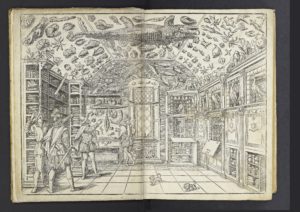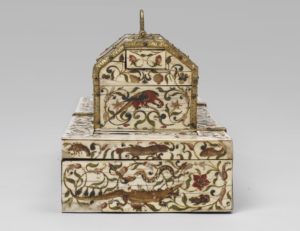
‘Cabinets of Curiosities’ of the 1600s were the precursor to the first museums. These rooms or pieces of furniture would be filled with their owners’ private collections of naturalia and artificialia (natural and man-made wonders).
Royalty and other powerful people could take pride in a cabinet that showcased the diversity of their treasures. Collections in cabinets were designed to be odd and miscellaneous, containing everything from antiques and scientific instruments, to fossils or exotic plants, as their goal was nothing short of universality. But these ‘universal’ cabinets were also personal: many would contain hidden features or drawers, making them only operable by someone who knew their secrets.

In the 1600s, collecting items from all over the world was a challenge, especially when collecting specimens from nature that had to be preserved and transported. As a result, works of art that show foreign and largely unknown plants and animals were worthy of including in a cabinet. The plants and animals painted on this box represent almost every corner of the world, including many parts of Europe, Asia, Africa, South America and Indonesia.
Although it wasn’t created as a cabinet of curiosities, this beautiful object is at once a collection of luxury materials, a strange menagerie, a garden, and a library of images sourced from all over the world. The universality of these features reflects the same desire to showcase wonders from home and abroad that led to the creation of cabinets of curiosity.

